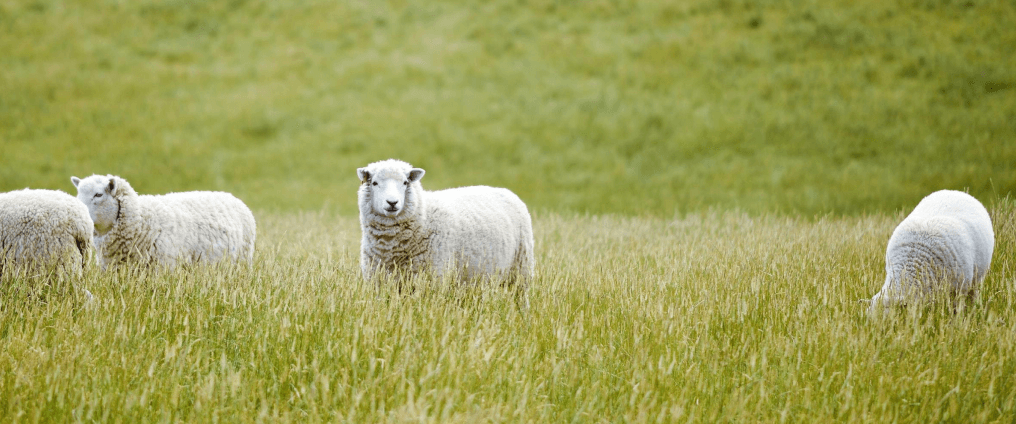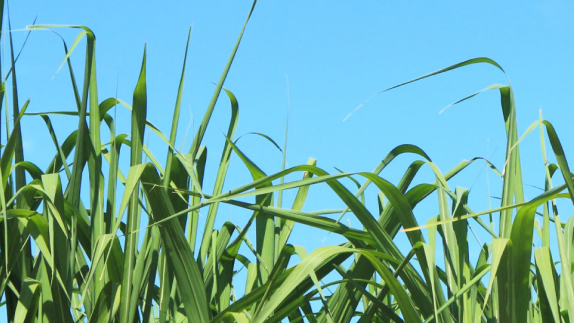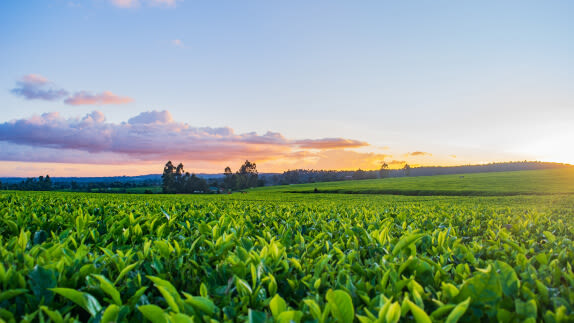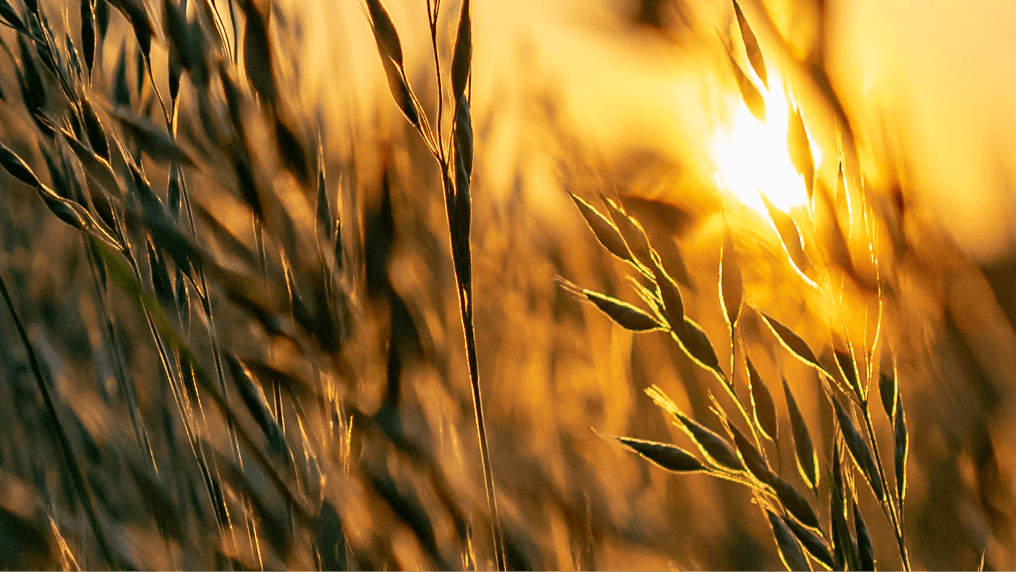name:
Winona Farm
origin:
Australia
Pasture cropping combines livestock grazing and crop-growing. The two systems are then managed in a way that ensures they complement each other.
This large-scale example of regenerative agriculture, was developed by two farmers, Colin Seis and Darryl Cluff, on a 2000-acre farm called Winona in New South Wales, and now, over two thousand farmers have adopted pasture cropping in Australia and other parts of the world.
The pasture cropping cycle
Annual winter season cereal crops are direct-drilled into perennial pasture grasses just as they are entering their natural dormancy period.
The grains grow out of the inactive grass, and are either harvested or used as direct forage by livestock, in this case mainly merino sheep.
During the summer, the growth cycles are reversed. The grasses flourish in the soil which has been enriched by the livestock, creating a rich pastureland.
This process sees the production of grain and fodder integrated with a holistic grazing system. Livestock are rotated regularly, allowing paddocks to rest for long periods, which avoids the impacts of overgrazing.
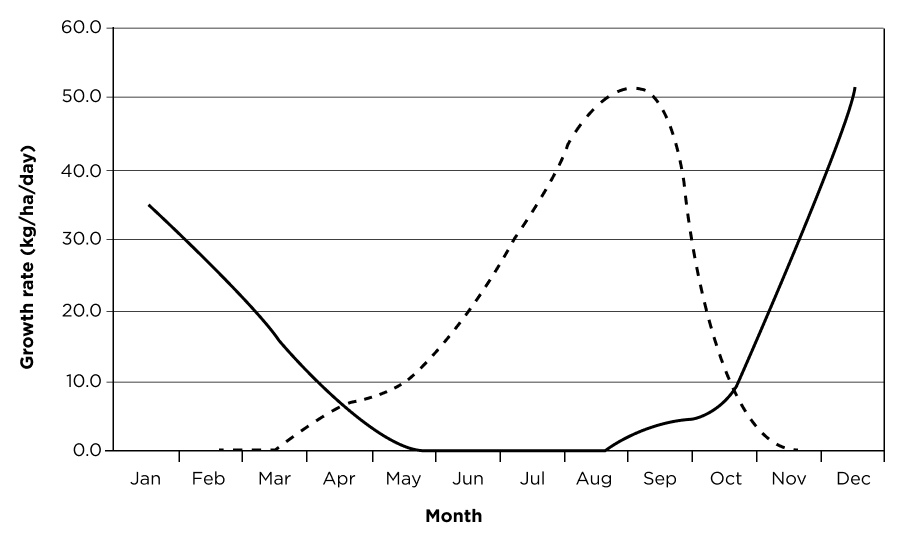
Growth rate of perennial grasses v cereals (dotted line) during one year
Why is it regenerative?
Pasture cropping, like all cover cropping systems:
Ensures that fields are never bare
Protects soils from erosion
Reduces water loss
Provides a habitat for above ground biodiversity
Provides food in the form of carbon to sub-soil microbes
The use of ploughing and herbicides can also be eliminated, avoiding negative impacts to soil health and biodiversity.
This is possible because the winter-dormant perennial grasses do not compete with grain crops. Soil fertility and structure is enhanced by a combination of decomposing plant matter (mulching) as well as through the integration of livestock, who trample their dung and urine into the surface layer.
This avoids harmful break up of the soil structure, and managed grazing can also be used to control weeds. For years, Winona Farm required up to five applications of herbicide per year, which has now completely stopped since the farm adopted pasture cropping.
“As we farm closer to how nature had it originally designed, the easier the workload becomes and the more profitable it can be.”
- Colin Seis
What are the benefits
Since shifting to a pasture cropping system in 1993, the benefits for 2000-acre Winona Farm have been significant and include:
Increased profitability through: Increased weight gain in livestock, multiple revenue streams and The avoidance of more than USD 90,000/year in chemical inputs
Over 10 years a 200% increase in sequestered carbon equivalent to about 60t/ha (200tonnesCO2e/ha)
Improved soil - reduced acidity, 3 x more water stored, zero soil erosion
Restoration of biodiversity rich permanent grasslands including 200 diverse plant species and 125% increase in insect variety.
Improved animal health
Increase resilience to climate change
Improved mental and physical health for farmer community
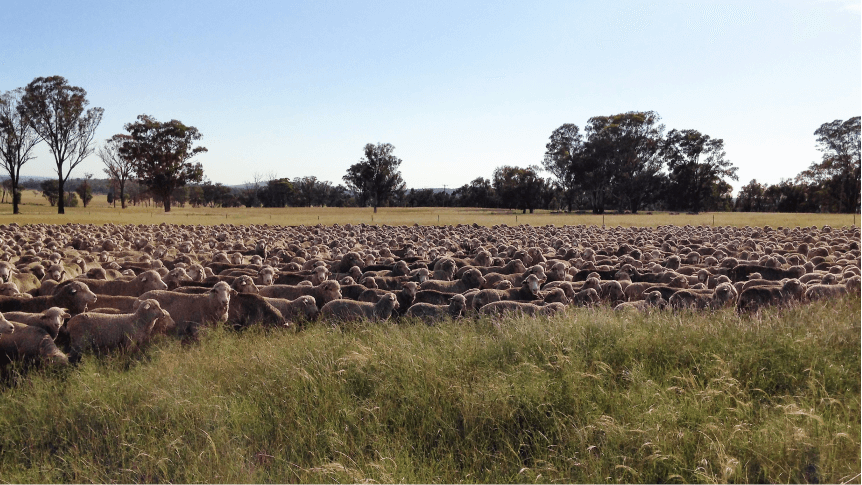
A mob of merino ewes with their lambs in the grassland.
Pasture cropping is another proven technique in the regenerative agriculture portfolio, that can be practised in regions where there is a natural dormancy in a pasture and suitable rainfall and temperature.
The success of Winona Farm and more than a million acres of farmland where pasture cropping has been adopted, sends a positive signal to areas of the world experiencing similar dry and arid conditions.
According to the UN, almost a quarter of the planet’s dryland is degraded and 1.5 billion people rely on this type of land for food and livelihoods. The challenges that these areas are experiencing will be compounded by the unavoidable effects of climate change in the decades to come.
Through years of hard work and experimentation, Seis and Cluff have demonstrated that it is possible to integrate grains, pasture, and livestock in the same field at large scale, in a way that is profitable and carbon sequestering. Furthermore, pasture cropping provides a powerful tool to reverse a destructive trend, by restoring degraded land to resilient and productive natural grasslands.
Further info
Case study published Oct 2021
